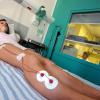There are over 7000 different rare genetic diseases, and often it can be a significant challenge and take a long time to receive a correct diagnosis.

However, a new Danish study may be a step towards faster and more efficient diagnosis of these diseases.
In the study, researchers used CRISPR technology to activate genes in easily accessible cells, such as skin or blood, to measure whether messenger RNA is correctly assembled in a biological process known as splicing.
This is an important advance, as 19% of disease-associated genes are “inactive” in readily accessible tissues, such as skin cells and blood cells.
“This means that until now, we have not been able to properly investigate the genes because they are only active in specific tissues, such as the nervous system, and this is a major obstacle when it comes to understanding whether a particular gene variant is the cause of a patient’s disease,” said Uffe Birk Jensen, Clinical Professor, Chair and Consultant at the Department of Clinical Medicine at Aarhus University and Aarhus University Hospital.
This is where so-called CRISPR activation comes into the picture as a potentially revolutionary solution.
This technique allows researchers to “turn on” genes that are normally inactive in easily accessible cells, such as skin and blood.
In collaboration with Associate Professor Rasmus O Bak at the Department of Biomedicine, it was possible to activate the MPZ gene, which is normally only active in the insulating layer of nerve pathways. The researchers behind the current study have thus shown how this gene can be activated in skin cells, and this can provide new opportunities to analyse, diagnose, and understand genetic diseases.
“With CRISPR activation, the gene can be turned on in a natural environment. There’s no need for gene modification in cell models; one can simply take a sample from the patient. The same method can be used for different patients and easily adapted to other genes, and the advantage is that it’s very fast with the possibility of results within a few weeks,” said Uffe Birk Jensen.
Image credit | Science Photo Library



